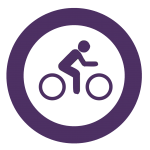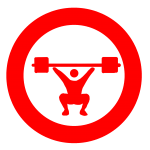It’s 2014! But you already knew that. You may have missed the mark with your 2013 fitness goals but fret not.
A new year is upon you, and all of the opportunity and enthusiasm that comes with it has also arrived.
There are probably a myriad of reasons you fell short of sticking to your fitness goals from last year, but the massive time requirement of your academics is likely the biggest of them all. That’s fine and dandy, and it makes sense. You’re in university to learn. Ultimately, personal fitness is but one piece of your larger life pie.
That being said, there are numerous ways committing to your personal fitness can benefit your mental health and your academic performance—food for thought for students who skip out on the gym when school gets stressful.
Stimulate the body, stimulate the mind
 Marta Wein, the supervisor of the Carleton Fitness Centre and Carleton’s fitness and recreation programs administrator, says physical activity might be just what you need to overcome winter blues and second
Marta Wein, the supervisor of the Carleton Fitness Centre and Carleton’s fitness and recreation programs administrator, says physical activity might be just what you need to overcome winter blues and second
semester stress.
“There’s a lot of research into how cardiovascular exercise helps people with depression and seasonal affective disorder by stimulating certain chemicals and hormones in the brain, and just generally helps them feel happier,” she says.
Exercise also has a direct impact on academic performance, says Nick Westcott, the manager of Carleton’s High Performance Centre.
Westcott has a degree in exercise science, with minors in biology and coaching, and is a certified strength and conditioning specialist.
He is also the head strength and conditioning coach for Carleton’s varsity hockey team.
Aside from benefits like stress reduction and an increase in endorphins, he says “exercise has been proven to increase the number of nerve cells, and interconnections between nerve cells in your brain, basically allowing you to create new neural connections.”
“And that isn’t applicable just to the central nervous system and athletics, that applies to overall neurological function,” he adds.
Westcott says aerobic exercise (cardio) decreases restlessness and increases general focus. As well, research also states that resistance training (lifting weights) increases mental acuity and the ability to focus on one thing at a given point in time, like a test or exam.
Westcott says he believes resistance exercise also has an indirect impact on academic performance.
“Resistance exercise has a positive effect on sleep quality. It also improves energy levels, which in turn will improve mood.
You get the benefit of new neural pathways, and that provides you with more tools to study, to be more alert in class, and to be more receptive to learning,” he says.
“Through strength training students are provided with more tools to learn, and to get the most out of their education,” Westcott says.
Give 80 per cent, 100 per cent of the time
 Both Westcott and Wein agree that above all else, consistency is the key to success. A big part of being consistent is setting realistic goals. If you haven’t exercised in a few months, expecting to go everyday is not only unrealistic, but is a recipe for disaster.
Both Westcott and Wein agree that above all else, consistency is the key to success. A big part of being consistent is setting realistic goals. If you haven’t exercised in a few months, expecting to go everyday is not only unrealistic, but is a recipe for disaster.
If getting into fitness is your New Year’s resolution, realistically fitness is not the top priority in your life.
To decide to go to the gym at least five times in a week and aim for perfection and perfect attendance is both unsustainable and unrealistic.
Wein says the most common mistake she sees this time of year is people doing too much, too soon.
“I would have a beginner exercise no more than three times a week. And that being said, aim for three, but if you get two, that’s also great,” she adds.
Westcott echoes that sentiment, stating that starting small is important. He says everyone should start with something realistic that suits their schedule and the amount of time they can actually dedicate to their fitness.
“A lot of people will come out of the holiday season after eating a lot and not really being active and decide they’re going to go five or seven days a week, and that will last seven days.
They’re already done. They’re too sore and beaten down. It doesn’t fit their schedule and they call it quits,” he says.
“Going two or three times a week for three months is going to accomplish way more than going hard for two weeks and taking three months off,” Westcott says.
Getting Started
 According to both experts, a three-days a week program that blends both strength training and cardiovascular exercise is an ideal approach to starting your fitness journey in 2014.
According to both experts, a three-days a week program that blends both strength training and cardiovascular exercise is an ideal approach to starting your fitness journey in 2014.
Westcott says in regards to long term, sustainable fat loss, there are a number of factors that influence what kind of exercise is ideal.
Things such as training experience, injury history, individual goals, and the amount of time available to train have a big effect on how the individual would exercise.
“For the general population, someone who only has time for three 45-minute sessions a week, they’re definitely going to want to make resistance training part of their training,” he says.
He says lifting weights, regardless of gender, will have a greater impact on fat loss than three equal duration cardio-only bouts of exercise.
“That’s not to say that aerobic exercise isn’t important. It does have a positive impact on overall health, as well as some fat loss benefits, but weight training is going to facilitate fat loss and have a bigger impact on body composition,” he says.
The reason weight training has a more significant affect on fat loss is because of the way it stimulates the metabolism,
Wein says.
Muscle tissue is the most metabolically active tissue in the human body, meaning that the majority of calories burned at rest come as a result of muscle tissue’s high energy demands.
According to research in the Journal of Physiology, stimulating your muscles with weights enables your metabolism to burn more calories throughout the day.
The result is more fat burned over the long term. And as you slowly become stronger, you also slowly build more muscle, which increases your body’s metabolism over the long term.
Generally speaking, the more muscle tissue you have, the stronger and faster your metabolism will be.
Westcott and Wein both say that focusing on basic movement patterns—squats, hinges, pulls, and pushes—is the most effective way to stimulate the body to change.
The more muscles involved in a movement, the greater the associated metabolic impact.
Westcott also notes that as a beginner, cardiovascular exercise should absolutely be part of your program.
Cardio should always be performed after weights. You want your body to be fresh and devoid of fatigue for your weight session so that you can execute the movements safely and effectively.
But will I become the Hulk?
 A common stereotype surrounding weight training is the image of weightlifters as unnaturally bulky. Westcott says this is inaccurate.
A common stereotype surrounding weight training is the image of weightlifters as unnaturally bulky. Westcott says this is inaccurate.
“I’ve been doing this for a while,” he laughs, “and it’s a lot harder than people think to do that, even for men.”
Westcott says weightlifting affects men’s and women’s bodies differently.
“Lifting weights will make women stronger, and they may get a little more toned, as they like to say. They may add some muscle mass, and they’ll decrease fat mass. Women don’t have the hormones to grow muscle like men do,” he says.
As a personal trainer, Wein says “women come in and they want that tight, toned body they see on websites and social media, and I explain that in order to look that way they’re going to have to work hard . . . An hour on the elliptical won’t create a body like that, but lifting weights can.”
Wescott says students exercising need to be patient because change comes gradually.
“The body composition changes happen fairly slowly, but when they’re starting out people can get better everyday, and they should take pride in that. If they stick to it and let that kind of thing motivate them they’re going to look how they want to look,” he says.






